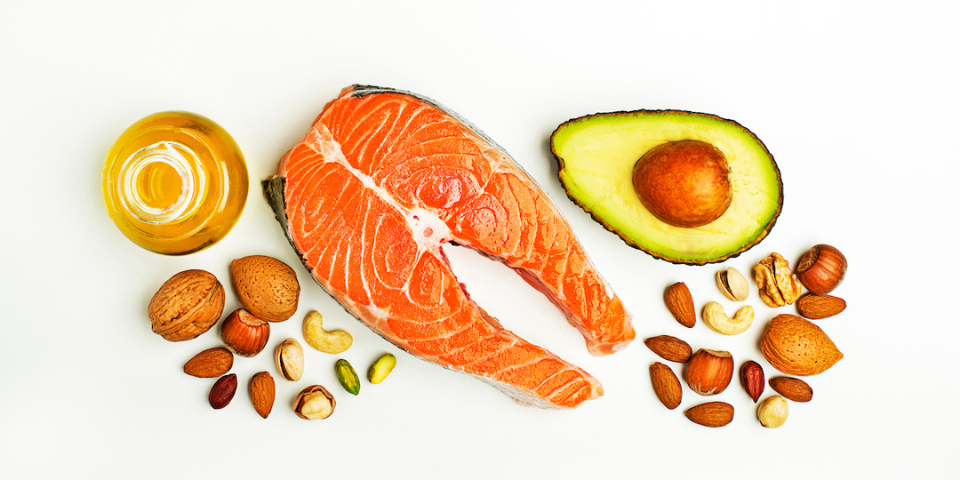As more informed consumers, we have come a long way since the anti-fat rhetoric that had permeated the nutritional space for several years. Fats are an important part of a balanced diet, and fatty acids like omega-3s have been found to be beneficial to our health.
But what are fatty acids exactly, and are they the same as fat? Why are they good for us? This is what you need to know.
What are fatty acids?
Fatty acids are carboxylic acids made up of carbon and hydrogen atoms, and function as fat components. They contribute to cell membrane support, long-term fuel storage, and hormonal and metabolic signaling.
Depending on the chemical structure, fatty acids can become saturated or unsaturated, says Brittany Linn (RD), owner of B. Phosphorus nutrition in New York City.
Saturated fats come from animal products such as meat, eggs and cream, along with specific plant-based oils. Because saturated fat is thought to have a negative effect on heart health, the American Heart Association recommends limiting saturated fat intake to about 5% of your daily total calories.
On the other hand, monosaturated fatty acids (MUFAs) and polyunsaturated fatty acids (PUFAs) are often referred to as “healthy fats” and are thought to have beneficial effects on overall health.
Foods have over 20 different fatty acids, with three in particular getting most of the hype of health benefits: omega-3, omega-6, and omega-9 fatty acids.
Types of fatty acids and their advantages
There are three main types of unsaturated fatty acids: omega-3, omega-6, and omega-9 fatty acids. The number of each name refers to where the double bond is in the fatty acid chain, explains Linn. (Don’t worry, we won’t turn this into a chemistry lesson.)
Omega-9 fatty acids are a type of mufa. Omega-3 and omega-6 fatty acids are types of PUFAs, both of which are considered to be part of a healthy diet.
Omega-3 and omega-6 fatty acids are considered “essential” because our body cannot create them. That is, you need to get them from a dietary source. Omega 9s are not essential as our bodies can manufacture them themselves.
Here’s what you need to know about each type of fatty acid:
Omega-3 fatty acids
Omega-3 fatty acids are polyunsaturated and come mainly from plants and fish. Omega-3 types include eicosapentaenoic acid (EPA), docosahexaenoic acid (DHA), and alpha-linolenic acid (ALA). In addition to the low risk of certain emotional and cognitive states, omega-3 fatty acids are associated with improved heart and eye health.
Omega-6 fatty acids
Omega-6 fatty acids are also polyunsaturated. Omega-6 is common in standard American diets, but the most important thing to be aware of is linoleic acid. This, along with Omega-3, is associated with improving heart and brain health.
Omega-9 fatty acids
Omega-9 fatty acids are not spoken about as often as omega-3 and omega-6 fatty acids. Although they are not essential, omega-9 fatty acids are thought to have many health benefits, so we recommend incorporating them into your diet.
How much fatty acids do I need to consume?
Fat is an important part of a healthy diet. Although individual needs may vary, about 30% of your daily calories should come from fat. (The remaining 70% comes from protein and carbohydrates.) Ideally, the majority of that 30% comes from healthy fats such as the aforementioned omega, while limiting saturated fats and avoiding trans fats entirely.
The best source of fatty acids

Since omega-3, omega-6, and omega-9 fatty acids are all present in many foods, the list below is based on the fatty acids they are most abundant, says Phosphorus. All three types of fatty acids are beneficial, but keep in mind that omega-3 and omega-6 fatty acids cannot be produced by the body.
Omega-3 sauce
Flax seeds and linseed oils of fish and other seafood (particularly cold-water fatty fish such as salmon, sardines, herring, mackerel, etc.) and linseed oil Chia seeds and walnut oil
Omega 6 sauce
Grapeseed oil Soy oil Corn oil Walnut and walnut oil farm tofu sunflower seeds
Omega-9 sauce
Olive oil Cashew nut oil Almond oil Avocado oil Peanut oil






